MARKET INSIGHT – October 2023
MARKET INSIGHT
Prime Partners’ monthly analysis of global economic and financial market news.
September lives up to its reputation
The summer of 2023 has thus come to an end for stock market, presenting investors with two very different phases. Two months of initial gains in June and July, lulled by optimism about the future attitude of central bankers and the prospect of rate cuts in 2024, followed by a degree of return to reason on the part of investors, obviously disappointed by the FED’s hawkish pause outlined by Jerome Powell on September 20.
Unsurprisingly, this adjustment in the general sentiment of financial markets has been accompanied by greater uncertainty as to the extent of the economic slowdown we have now entered. “Soft landing” or not, many investors now seem to be asking more questions than they did a few weeks ago, whether about the state of the German economy, the Chinese situation or even certain US indicators (credit card defaults, rising corporate bankruptcies or even the surge in shoplifting reported by major retailers).
So far, so good, one might say, and the question now is whether we are at the start of a marked downturn in activity, or whether the current signs of weakness are merely temporary and ultimately in line with the narrative of an economic soft landing after long quarters of battling inflation.
Whether we are talking about finance or other aspects of life, our nature often leads us to tell ourselves that things are going to be all right whenever challenges loom. But once these become more concrete, doubt is a normal response, and generally allows us to make well thought-out decisions.
The financial markets currently seem to be in such a phase. The economic slowdown is by no means a surprise, and is beginning to take hold after months of greater than expected resilience in the US economy in particular.
However, central bankers’ rhetoric remains unwavering, and the fight against inflation is far from over. As a result, market participants must now adapt their portfolios to an environment of durably elevated interest rates and higher inflation than in the last fifteen years.
Not surprisingly, the speed and jerkiness of these adjustments are proving to be disruptive factors, paving the way for classic asset-allocation mistakes that we are careful to avoid.
Alarming headlines in the financial press and sometimes cataclysmic forecasts from leading asset managers and economists should not distract us from our central scenario for the US economy in 2023.
The all-powerful technology sector and the Inflation Reduction Act provide solid support
There is no recession in sight by year-end in the United States. The all-powerful technology sector and the Inflation Reduction Act provide solid support, and we do not think that the current slowdown will be severe enough to offset them.
In our view, the situation in Europe remains fairly similar to that in the US, but lagging behind, with the ECB trailing the FED by some months. We do not anticipate a catastrophe for the economies of the Old Continent, even if we believe that the slowdown will be more pronounced there than in the United States. For the past eighteen months, the war in Ukraine has been forcing European countries to make a rapid energy transition, both in terms of their energy mix and sources of supply.
What is more, the importance of the industrial sectors (automotive in particular) and the preponderance of European luxury goods (themselves confronted with the lack of a Chinese rebound) contrast with the structure of the American economy.
Finally, it hardly needs reminding that, beyond the strengths and weaknesses of each, European consumers are by nature more thrifty than their American counterparts, resulting in a less agile economy characterized by different dynamics.
How will we position our portfolios over the coming months?
As mentioned earlier, we are not giving in to panic, despite a complicated September on the equities front, which saw the global stock index (MSCI All Countries) drop back to its level of early June. Equity performance over the last three months has been down, both in the United States and Europe, as well as in emerging markets, where the Chinese reopening has so far been little more than a mirage.
We also note that the equally-weighted S&P 500 index is now close to a flat performance in 2023, highlighting the fact that it is above all the US technology powerhouse that has driven the stock market higher this year.
Given the current economic climate and our expectations for the end of the year, this is hardly surprising.
The first-half results published by companies have by no means shown any excessive weakness, and in fact, for the most part, have allayed many fears.
However, management guidance remains generally cautious, due to the many uncertainties in the months ahead. Only companies benefiting from the advent of artificial intelligence were clearly enthusiastic about the coming quarters, led by semiconductor manufacturers. Here again, there is a certain logic to the performances of recent months.
The first-half results published by companies have by no means shown any excessive weakness, and in fact, for the most part, have allayed many fears.
The present environment prompts us to remain cautious on equities, but without reducing our exposure. We continue to favor developed markets and insist on good sector diversification, with technology, insurance and healthcare still among our favorites.
On the bond front, the recent surge in US 10-year yields to levels not seen for more than fifteen years has encouraged us to view this asset as an even more attractive investment for the coming quarters.
At the same time, the very short end of the yield curve makes short-dated government and corporate bonds very appealing. For the latter, we prefer issuers with solid ratings, particularly for longer maturities.
Finally, “cash is king” at the moment, not because of a bad economic climate, but rather because the returns on money market funds, particularly in dollars, are surpassing most bond yields, without generating any volatility or risk for investors.
We are by no means forgetting the alternative pocket of our allocations, where the long/short strategies we hold play a key role in contributing positively to the performance of our mandates, while offering a high degree of decorrelation from equity markets.
We still consider gold an investment whose potential remains intact, once the strength of the greenback (boosted by the current interest-rate differential in favor of the dollar) and the attractiveness of US government bonds to investors start to fade. In both cases, a change in tone from the Federal Reserve will be needed.
The markets are entering the final calendar quarter, generally synonymous with hope for investors, who are calling for a year-end rally after the dreaded month of September.
We attach little importance to these considerations of historical seasonality in equity performance, preferring instead to keep our allocations on track and to adapt them regularly to our central scenario for the economy.
2023 should remain a year of transition for the developed world, marking the end of the monetary tightening cycle conducted by central bankers, before they embark on a period of observation of the fruits of their actions in 2024.

